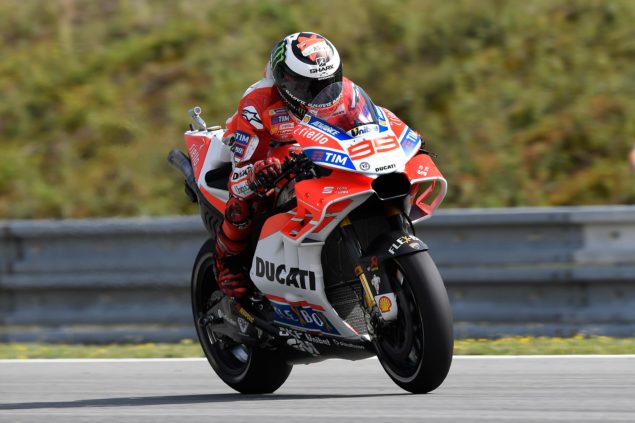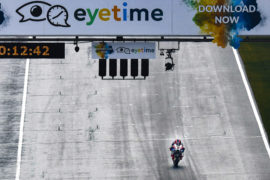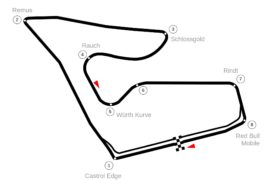The new fairing unveiled by Ducati yesterday was not entirely complete. On Saturday morning, the fairing fitted to Danilo Petrucci’s Pramac Ducati revealed an added layer of complexity and variability.
Below is the new fairing used by Jorge Lorenzo, and fitted to the bike yesterday:
The aerodynamic package consists of a side pod on each side, with two large aerodynamic surfaces at the top and bottom.
But that is not the complete package. As you can see from Petrucci’s fairing below, the side pod allows the number of internal vanes to be varied. Petrucci’s bike has a single internal vane added (in white in the picture), which will increase the amount of downforce.
It is clear from the design that the side pods are meant to be swappable to change the amount of downforce at different tracks. If you look closely at the top of the side pods, you can see that the outer vertical element of the pod is attached with a couple of screws at the top, and a couple of screws at the bottom.
That makes it possible to unbolt an element with no internal vane and replace it with one with an internal vane quite quickly.
That is allowed under the rules. The aerodynamic regulations mean that only the external shape has to be homologated. What happens on the inside of the side pods is completely free.
Yamaha exploited the same loophole in the design of their aerodynamic package, using different numbers of internal vanes at different tracks. Interestingly, Yamaha is not using their aerodynamic package at Brno, while Ducati and Honda experiment. Suzuki, similarly, is not using its aero fairing.
However, the side pods on Petrucci’s and Lorenzo’s bikes are different. Petrucci’s extends much further down the side of the fairing, the lower part containing a lower wing. The question is whether these have been homologated as two fairings or as one.
Technically, the rules say that the outer shape must remain unchanged. However, teams are allowed to attach and detach bolt-on parts, such as is the case with the Honda aerodynamic package.
If the upper and lower sections are regarded as detachable parts (which the prominently visible screws suggest they are), then the entire package may be regarded as a single, homologated part. This can be cleared up by MotoGP Technical Director Danny Aldridge.
We shall attempt to get an affinitive answer from him later.
Another note on the size of the side pods of the Ducati. In the flesh, the side pods aren’t as large as they look in photos. They are still significant – roughly the size of Ducati’s winglets last year – but they are not abnormally huge.
Photo: Ducati Corse
This article was originally published on MotoMatters, and is republished here on Asphalt & Rubber with permission by the author.




